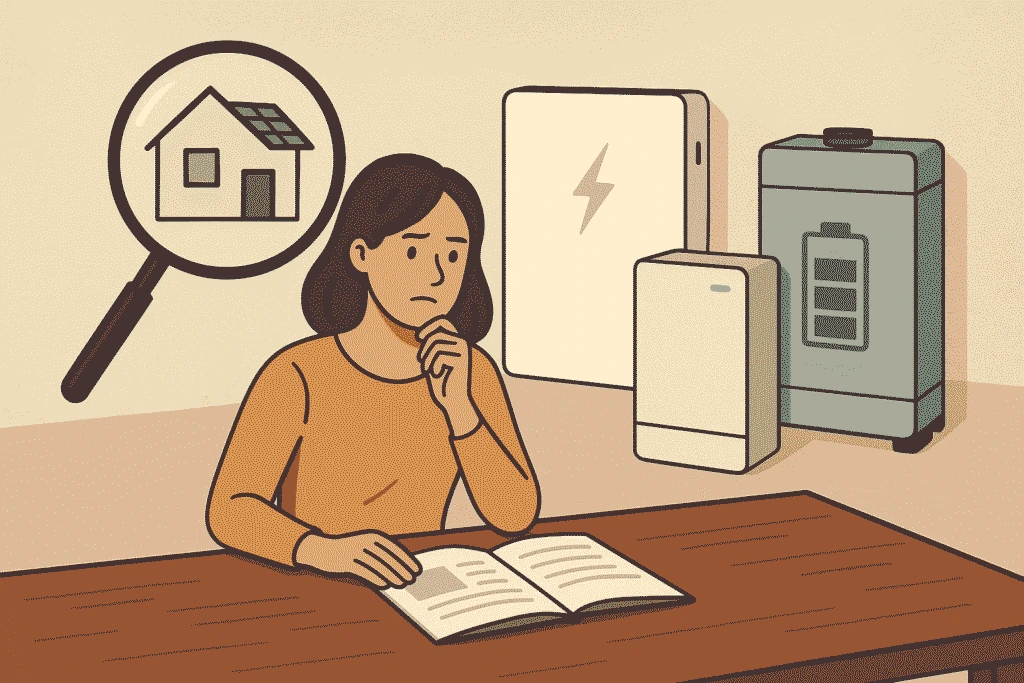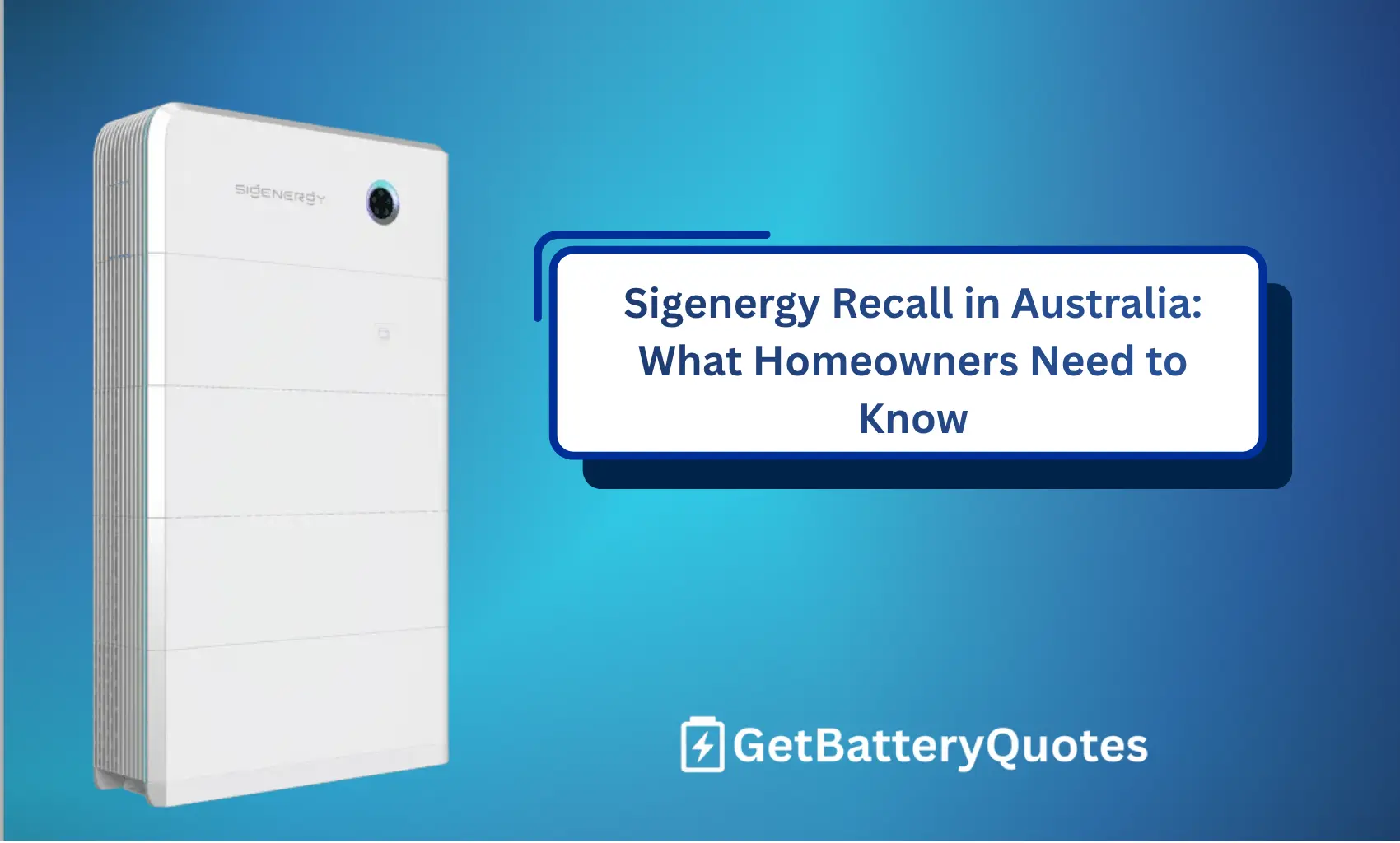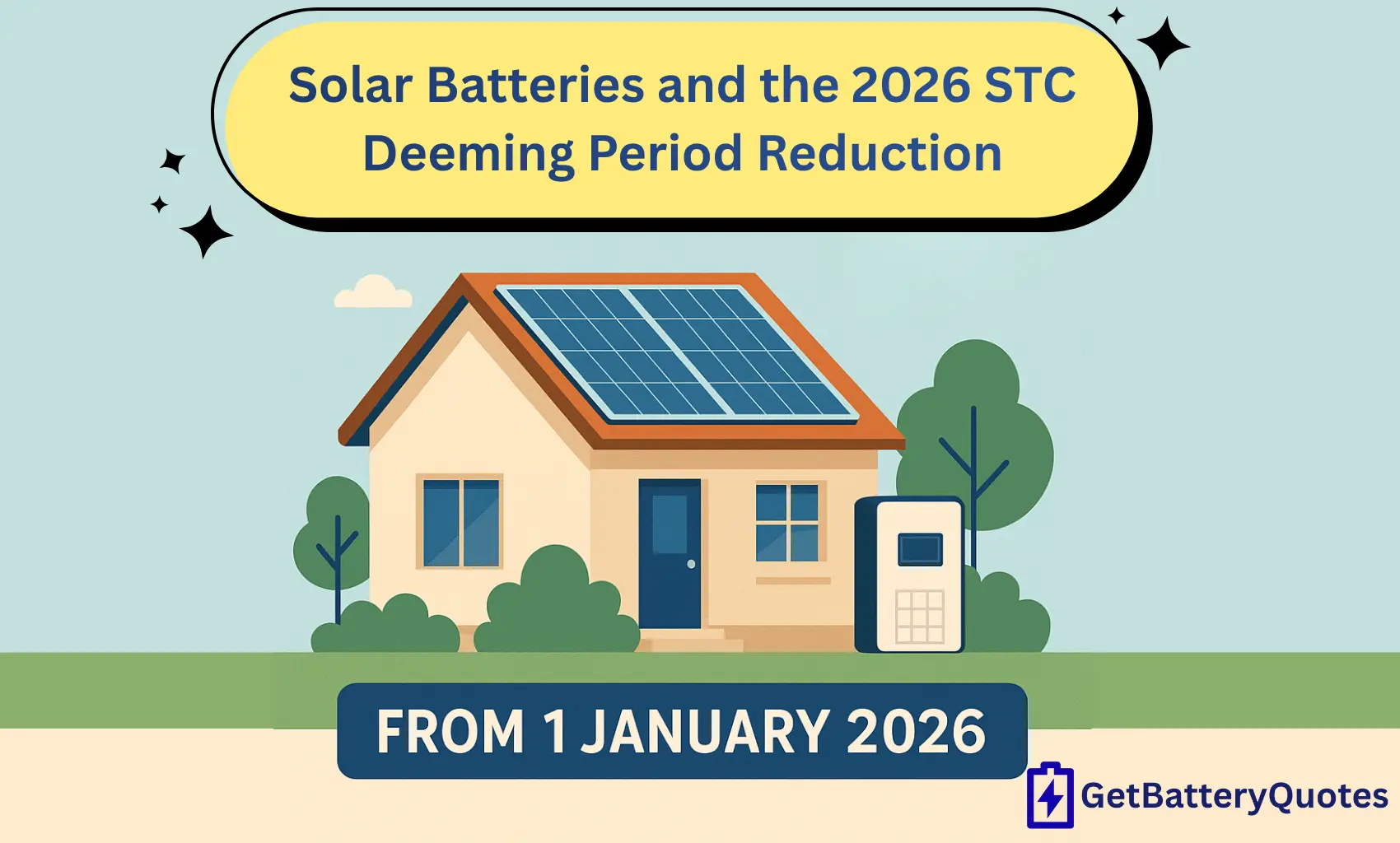Table of Contents
- 1. Step 1: What’s your main goal?
- 2. Step 2: Do you already have solar and how much energy do you generate?
- 3. Step 3: When (and how) do you use most of your power?
- 4. Step 4: What’s your budget and which rebates can you claim?
- 5. Step 5: Who installs it and can you trust them?
- 6. Why we vet every installer on our platform
- 7. Ready to Take the Next Step?
Not all home solar batteries are built the same and not every home needs the biggest or most expensive system on the market.
With new rebates and more brands available than ever in 2025, the real question isn’t “What’s the best battery?” it’s “What’s the best battery for my home?”
This 5-step framework will help you narrow your options, avoid costly mistakes, and feel more confident comparing quotes.
Step 1: What’s your main goal?
Backup Power
“I want to keep the lights on during blackouts.”
Look for a system that supports backup functionality not all batteries do. Also consider whether you need backup for your whole home or just essential circuits (like the fridge, lights, and Wi-Fi).
Maximize Solar Usage
“I’m exporting too much solar I want to use more of it myself.”
A battery lets you store excess solar during the day and use it at night. This improves solar self-consumption and can lead to faster payback times in some homes.
Bill Reduction
“I want to lower my power bills over time.”
Look for a system that balances price, performance, and warranty. A well-matched battery can shift your grid usage to off-peak times and help avoid high feed-in tariff losses.
Energy Independence / Sustainability
“I want to rely less on the grid and be more self-sufficient.”
This often means a larger battery system, possibly in combination with solar, smart energy controls, or even off-grid capability. Modular systems can also help you scale over time.
Home Electrification
“I’m switching from gas to electric and want to future-proof my energy use.”
More Australians are replacing gas hot water, heating, and cooking with electric options — and batteries help power these loads efficiently, especially at night.
Step 2: Do you already have solar and how much energy do you generate?
Your solar setup (or lack of one) plays a big role in what kind of battery system will suit your home.
Already Have Solar?
- The amount of excess energy your system exports each day is key.
- A battery makes the most sense when you’re consistently sending power back to the grid — that energy can be stored instead.
- If your system is older, you may need an inverter upgrade or an AC-coupled battery.
- And remember: if your goal is winter backup or year-round coverage, your battery and solar system need to be sized with seasonal generation in mind.
💡 Tip: If your solar exports vary throughout the year, your battery size should match your lowest seasonal output not just your summer peak.”
Planning solar + battery together?
This offers the most flexibility your installer can design a system that balances:
- Daytime generation
- Night-time usage
- Winter charging capacity
- Any future electrification plans (EVs, heat pumps, induction cooktops)
No solar? Battery-only system?
- You won’t be eligible for the federal battery rebate unless your system is connected to solar
- Long-term savings may be lower compared to solar-paired systems
- It’s generally more suitable for tech-savvy users or those focused on energy trading, not just backup or bill reduction
Step 3: When (and how) do you use most of your power?
Evening-heavy homes
“We’re out during the day and use most of our energy at night.”
This is the most common scenario. A battery allows you to store excess solar from the day and use it in the evening — for lights, appliances, cooking, and heating/cooling.
- A well-sized battery can cover most evening loads and reduce your reliance on grid energy
- If you're using electric heating or hot water at night, you'll need more storage than someone just powering lights and devices
- If backup is important, consider a system that supports evening outage protection.
All-day usage
“Someone is home during the day working remotely, kids, retirees, etc.”
You may already self-consume a lot of your solar, which reduces the amount of excess energy available to charge a battery.
- A smaller battery may be enough to handle your late afternoon and evening needs
- Smart controls can help prioritize solar between appliances and the battery
Seasonal shifts
“We use more power in winter heating, hot water, longer lighting hours.”
Batteries generally charge best during summer and shoulder seasons, when solar production is high. If you want meaningful winter coverage, consider:
- Whether your solar system is sized to support winter charging
- Staggering high-demand appliances across the day to align with solar output
- Whether your main loads (e.g. hot water or space heating) can run during the day
High morning usage?
“We use a lot of power before 9am heating, showers, or early routines.”
If this sounds like your home, it’s important to ensure your system is designed to handle it.
- Consider a larger battery that can carry charge through the night into early morning
- Pair it with a solar system that reliably recharges the battery during the day
- Some households also join Virtual Power Plants (VPPs) or use off-peak grid charging to top up the battery overnight when solar isn't available
Getting the sizing right is where a good installer adds real value, more than specs on paper ever can.
Step 4: What’s your budget and which rebates can you claim?
Let’s be honest: batteries aren’t cheap. But with the right setup and access to rebates, they can still offer strong long-term value.
Typical Costs in 2025
- Whether the battery includes backup functionality
- The brand and performance tier
- The type of inverter setup (hybrid vs retrofit)
- Whether it’s installed as part of a new solar system or added later
What rebates are available?
- A flat-rate federal rebate (based on battery size and usage)
- State-specific rebates or interest-free loans (VIC, SA, NT, etc.)
- Network incentives or VPP payments if you join a virtual power plant
Step 5: Who installs it and can you trust them?
Look for these non-negotiables:
SAA Battery Installation Certification (AS/NZS 5139)
Your installer must be certified to install home batteries under AS/NZS 5139, which governs battery safety and compliance across Australia. This is not optional it’s a legal requirement.
Experience with your chosen brand
Some batteries require product-specific training or certification. It’s worth asking how familiar your installer is with the system they’re quoting.
Warranty support
Make sure the installer offers a clear installation warranty and can guide you through the manufacturer’s process if you ever need to make a claim.
Transparency
Be cautious of vague quotes, missing documentation, or high-pressure sales. A good installer will give you clear pricing, product datasheets, and a system tailored to your home and energy goals.
Why we vet every installer on our platform
- Are fully licensed and insured
- Hold valid battery installation certification (AS/NZS 5139)
- Have proven experience with battery storage
- Commit to quality workmanship and long-term customer care
Ready to Take the Next Step?
- Check your eligibility for federal and state battery rebates
- Compare quotes from up to 3 trusted, certified installers
- Get clear, personalized information with no pressure and no obligation






